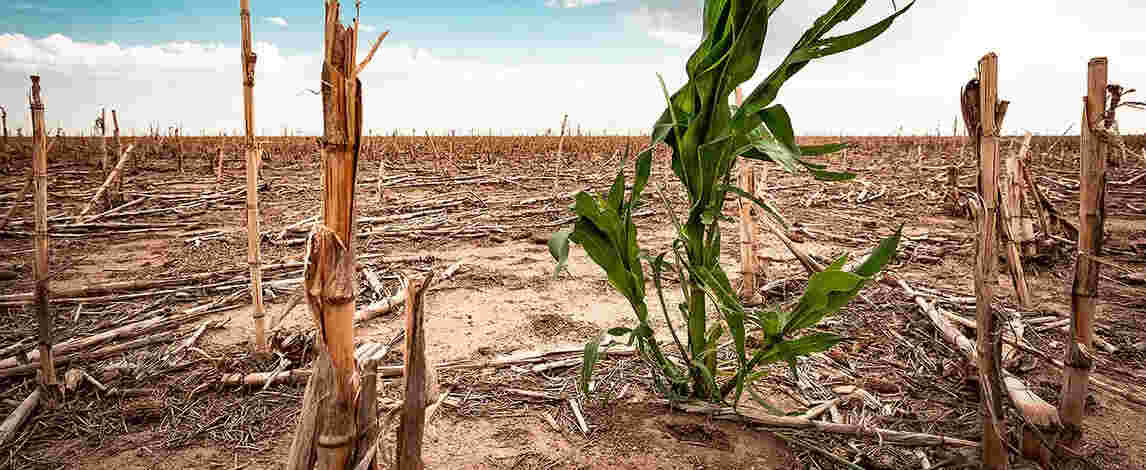7 Crore+ Customers

Affordable Premium

7 Crore+ Customers

Affordable Premium



India receives significant rainfall annually owing to its geographical setting. However, global warming and climatic conditions have reduced the rainfall amount in recent years.
This, in turn, has triggered the groundwater levels to decrease, leading to loss of soil moisture and dry conditions. Moreover, irresponsible practices such as deforestation, pollution, etc., have increased the occurrences of droughts.
Keep reading to learn more about the drought prone areas in India and follow the requisite disaster management steps.
Drought-prone districts in India comprise nearly 1/6th of this country in terms of area. These areas receive an annual rainfall of around 60 cm or less.
The Irrigation Commission of 1972 had identified nearly 67 Indian districts that were prone to droughts. These include 326 talukas situated in eight Indian states.
However, the recent data shows that 74% of India’s districts are vulnerable to extreme drought situations. The data shows that 27 out of 35 states and union territories are in the risk zone.
These situations can be attributed to human malpractices such as over-irrigation, deforestation, pollution, urbanisation, etc. The natural causes such as poor rainfall, climatic conditions, high temperature, etc., are also at fault.
Nevertheless, here is a list of the most drought prone areas in India. One can assess the list to identify whether they live in the risk zones and take appropriate measures.
|
State |
Arid Area (square km) |
Semi-arid Area (square km) |
|
Rajasthan |
196,150 (57.31) |
121,020 (35.396) |
|
Gujarat |
62,180 (31.72) |
90,520 (46.18) |
|
Maharashtra |
1,290 (0.42) |
189,580 (61.61) |
|
Madhya Pradesh |
- |
59,470 (13.41) |
Individuals should know that the drought affected states in India are primarily in the arid, semi-arid and sub-humid regions of this nation. These areas receive less than average annual rainfall.
The Western Ghats are highly erratic and receive rainfall lower than 750mm. Since this area is highly populated, the suffering or damage caused by drought is high. The area extending from Ahmedabad to Kanpur and from Kanpur to Jullundur receives less than 750mm or even less than 400 mm rainfall.
Besides these areas, there are many pockets of drought in India. They are:
Let’s check the preventive measures to protect yourself and your family from the effect of drought.
These are some solutions to reduce the risk of famine in the major drought prone areas in India.
Apart from these preventive measures, individuals should also secure themselves financially to confidently face the calamity.
An intelligent solution can be opting for life insurance or drought-based insurance to safeguard their family's future. Individuals can also insure their expensive assets and get the appropriate return when facing such calamities.
These are some insurance policies that individuals residing in areas prone to drought in India can check.
Individuals can insure their crops from natural famine. This insurance plan covers the financial losses suffered from unforeseen perils like crop failures, less rainfall and drought.
One can find both Government and private insurance schemes that offer substantial coverage against affordable premiums. However, individuals must read the terms thoroughly before purchasing such plans.
Individuals residing in the drought-prone zone must opt for life insurance. It is a contract between an insurer and insured that promises to pay a lump sum amount to the insurance holder’s family after his/her demise. In other words, this policy secures an individual’s life financially.
For those seeking more specific protection, term life insurance can be a cost-effective option. It offers high coverage at affordable premiums and is ideal for individuals looking to financially safeguard their families during uncertain times, such as prolonged droughts that may impact livelihoods.
Individuals can also find drought specific .........